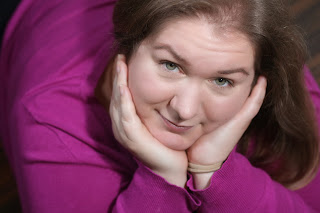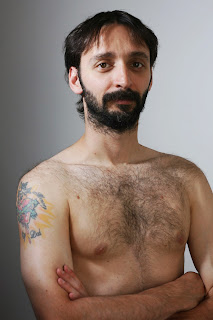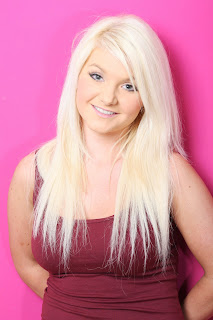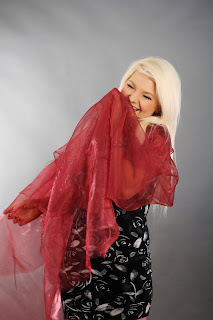For quite a while this is something I have wanted, lets face it, how cool will it be to have a designated room in your home just for photography. Well we have a spare room, but unfortunately it can't be solely a studio, that didn't stop me ensuring I had some matt white walls when we redecorated over the winter, leaving me a whole wall specifically for portraits. After my studio day this got me wanting to get things sorted but actual studio lights are expensive, not only that you need light stands, diffusers, reflectors, sync cables or wireless remotes. I think a budget set was mounting up to £500 eeeep. This is where google became my friend. I had previously tried this with construction lights but they are so hot and constantly on that it just isn't suitable. One of the things I learned on my studio day, so speedlites or flashguns are the next option. I think my set up has cost £100 but as a start I am happy. I have a Yungnuo Spedlite, wireless transmitter, so I can trigger the flash from my camera but whilst it's on a light stand and a diffuser, I opted for the wireless transmitter that allows me to have a second flash, even though I have only bought one at the moment. I personally bought all of mine from Amazon.co.uk, but I'm sure you could get it all from eBay for the same kind of price. The speedlite came from Hong Kong and was quoted as 20 day shipping and arrived in 1 week, so no complaints there.
Anyway, my first attempt was not so successful, I was hot, bothered and fed up that it did not come as easily as it did in the proper studio, so I took some time out, read up on google and had another go. I learned that unless you want lots of shadows, the model has to stand away from the wall, this should have been obvious but hey ho. Also the light needs to be closer to the model than the wall. As I am keeping the curtains open, which are on my right, the light was best placed on the left. This is not what I originally thought, but it's always good to experiment. Today's testing was really to see what settings get the best result. Now I don't really understand the settings on the speedlite too well. I set the zoom to 50mm as I was using a 50mm lens. I have no idea if this is actually correct but it seemed a good start. As for the flash amount, I think I opted for the least amount of light at 1/128. Next came the actual camera settings, I opted for ISO 200 and an expose of 1/200 and then took a photo with a different f/stop. As a side note, some more expensive speedlites you can control all the settings directly from your camera, as I have no issue with manual modes I was happy to save a little money and not care about setting it on the actual speedlite.
Anyway I had some interesting results.
Here is one with my willing (ish) model with an f/stop of F1.8
As you can see the flash of light is coming from the left and it is clear on Stav's face. I continued to take photos but with changing the f/stop and the background got darker. Here are a few examples.
As you can see the photo gets darker and darker. I actually think this is quite cool as it means I can experiment with some darker moody ideas without needing a backdrop.
I did try adjusting some of the flash settings and some of them were way way too bright and I definitely need more time up there experimenting at different times of days.
This wasn't even the brightest setting.
As the room is really hot and the speedlite eats batteries we stopped here. I have been recommended some rechargable batteries that work well with the speedlite and a charger for £15, so I think when I next get paid I might need to invest in that.











































































